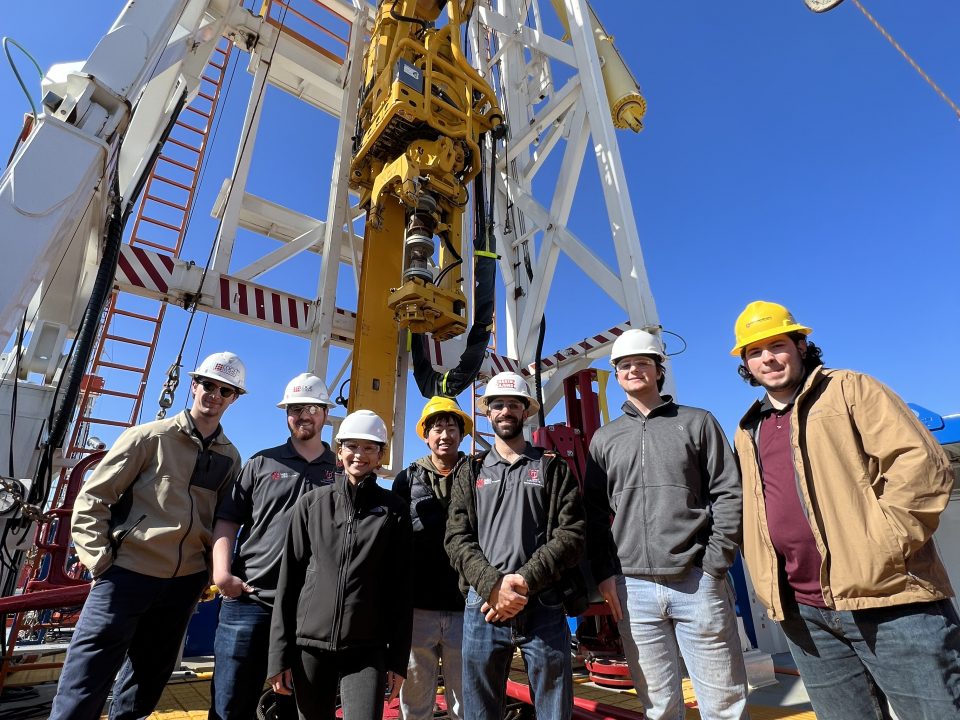Accident Prevention Around the Rotary Table
Accident Prevention Around the Rotary Table
Accident Prevention Around the Rotary Table
The highest frequency of accidents in the drilling industry occurs on the rig floor, and more specifically around the rotary table. Most of the rig crew’s activity is centered around the rotary, making a trip or connection. Most of these accidents result from being struck by or caught between equipment or tubulars.
Rig Floor / Rotary Table Safety
- The rotary table and surrounding work area should have a mat or covering to prevent slips or falls.
- Keep tools and other materials off the rotary table. Once the need for tools ends, pick up all tools and items that could cause a fall around the rotary table.
- Keep tools and other materials stowed properly around the rig floor when they are not in use.
- Keep the rotary table surface and rig floor work area as clean and dry as possible.
- Be alert. Watch the driller and other coworkers for signals.
- Simultaneous operations such as drilling ahead and performing maintenance require special attention.
- When conducting maintenance work on the rig floor while drilling, be aware of the rotating kelly.
- Check the tong dies to ensure they are sharp and properly secured.
- Inspect tongs, snub lines, pull back lines, elevators, mud bucket and slips to make sure they are in good condition.
- Be sure all coworkers are mentally alert and ready to work.
- Protect against dropped objects. The derrickman should check for loose objects on the derrick board and in the derrick.
- Be sure you are wearing hard hat, safety shoes, safety glasses, gloves and no loose fitting clothing.
- Do not step or stand on rotary.
- Keep hoisting cables clear of the rotary table and/or kelly when it is rotating.
- Do not stand under elevators or between pipe and the joint in rotary table when picking up or laying down drill pipe or drill collars.
- Care must be taken when picking up drill pipe while drilling ahead. Keep the air hoist cable away from the rotating kelly.
- Always stand clear of tongs and elevators; do not get inside of the tong line when the driller is making up a connection.
- Use extreme care when placing hands on pipe, collars and tongs.
- Coordination between driller and rotary helpers is essential.
- Use sufficient help when setting and pulling slips. Place you hands on the slip handles with the palms up when pulling or setting slips.
- Use extreme care when locking and unlocking the rotary table.
- Pulling rotary bushings: Hazards include being struck by cable or bushings as they are removed from the rotary, or dropping same on toes.
- Care must be taken to keep feet from below the bushings as they are hoisted.
- Prepare and inspect all tools and equipment. Inspect the air hoist cable, chain, and bushing puller.
- Unlock the bushings
- Tie onto the bushing with the bushing puller. Be sure to place the bushing puller hooks completely into the bushings.
- Pull the bushings out only high enough to clear the rotary table then set the bushings aside. Keep feet clear from under the bushings.
- Reinstall reverse of pulling the bushings.
- Be sure to lock the bushings in place once reinstalled.
- Return the bushing puller to its proper storage area.
- No horseplay should be permitted on the rig floor or for that matter anywhere on the well location.




